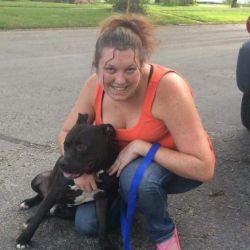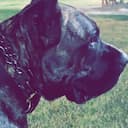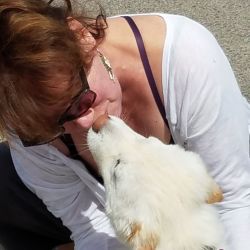Tailored Redbone Coonhound Shipping Services


Ensure your Redbone Coonhound's comfort and safety. Choose CitizenShipper for reliable transport.



2,500+ drivers
Actively competing for your business.90% of listings
Receive a quote in less than 10 min.100,000,000+
Miles driven by qualified transporters.14+ years experience
Shipping what matters most.How much does it cost to transport your dogs
Your dog is so much more than four legs and a tail — they’re members of your family and best friends for life. We’re proud to be the nation’s top-rated and leading service for dog transportation.
Our unique process matches you with a fleet of pre-screened shipping service providers with prior experience at transporting dogs, with strong emphasis on your pet's comfort and safety.
Successful Redbone Coonhound transports from our platform
| Shipment | Location | Distance | Cost |
|---|---|---|---|
| Becki O. Y. shipped Mingus | Washington, CT → Austin, TX | $700.00 | |
| Sophia shipped Bender | Clermont, FL → Fort Lauderdale, FL | $250.00 | |
| Jacob L. shipped Billy | La Crosse, WI → Galena, OH | $450.00 | |
| Ricky R. shipped Red | Mount Pleasant, TX → San Angelo, TX | $165.00 | |
| Ismery shipped María | Key West, FL → Mansfield, TX | $1,500.00 | |
| Amy S. shipped Sullivan | Mount Pleasant, TX → Los Angeles, CA | $400.00 | |
| Gregory shipped Unnamed | Winfield, TX → Pataskala, OH | $475.00 | |
| Wendy shipped Bart | Great Falls, MT → Monticello, AR | $800.00 | |
| Doug shipped Stilgar | Painter, VA → Steamboat Springs, CO | $975.00 |
We are committed to building a safe, caring environment for people and animals on the road
Top Redbone Coonhound transporters

darryl

Almost Home Transport

- We carefully background check all shipping service providers.
- We verify transporter addresses and contact information for additional protection.
- Photos of shipping service providers and their vehicles help confirm who and what to expect.
- Detailed customer reviews provide insight and transparency to your selection process.
- Find A Loving Dog Transporter
What determines the cost of Redbone Coonhound shipping
Here's what you need to know about safely transporting your Redbone Coonhound.
 Mode of transportation
Mode of transportation
Ground travel
Cost $$$
Time ⏱⏱⏱
Air travel
Cost $$$
Time ⏱⏱⏱
 Travel distance
Travel distance
The further you need to transport your pet, the more it'll cost. If you're using ground transportation, you'll have to factor in fuel costs, lodging, meals on the road and wear-and-tear on your vehicle. These costs are applicable whether you drive the pet yourself or you hire a shipping service provider through CitizenShipper. Airlines charge more for longer plane rides as well. This is due to the cost of fuel and the need compensate pilots and flight attendants.
 Pet size
Pet size
Smaller pets are easier – and less expensive – to transport. If you’re flying your Redbone Coonhound, they’ll need to travel in the cargo hold if they’re over 20 pounds. You’ll also need to buy a USDA-approved crate, which can cost around $200. With ground transport, it’s easier for shipping service providers to accommodate small pets.
 Health clearance and travel equipment
Health clearance and travel equipment
The first step to transporting your Redbone Coonhound is ensuring they’re healthy enough to travel. Most species require a vet-issued health certificate to cross state lines. This will cost $50 to $300. You’ll likely need to purchase some equipment too – such as a crate and travel supplies.
How to prepare your Redbone Coonhound for transport
At CitizenShipper, we pride ourselves on making pet transportation a breeze. However, there are things you can do ahead of time to make your best friend's trip safer and more comfortable.

Talk to your veterinarian
Your pet's safety is number one – that's why checking in with your vet before finalizing any travel plans is essential.
Can't make it to the vet's office in time? Conveniently video chat with a qualified veterinarian at Vetster – one of our amazing partners.
Here are the questions you'll want to ask your vet:
- Is my pet healthy enough for transport?
- Is my pet up to date on their vaccines?
- Is my pet's microchip still in place and scannable?
Health and Vaccination Records
Prior to any travel, verify that your Redbone Coonhound's vaccinations are current, particularly rabies, and have your veterinarian issue a health certificate. Always have copies of these documents easily accessible throughout your journey.Identification and Tracking
A collar with ID tags, including your contact information, is fundamental. For extra security, consider a microchip and a GPS tracker to ensure your companion's whereabouts at all times during travel.



Comfort Items and Familiar Scents
Bringing a beloved toy, blanket, or even a piece of your clothing can reassure your Redbone Coonhound and help reduce travel anxiety. Familiar scents act as a subtle reminder of home and provide emotional comfort.Essential pet transport travel supplies include:
- Food, bowls and fresh water
- Collars and leashes
- Waste bags
- Medication
- First-aid supplies
- Any travel documents
- A secure, USDA-approved travel crate
Traveling to a new place is exciting but stressful for your pet. Pack their favorite toys, a bed or a comfy blanket to help them enjoy their journey. Familiar items remind them of home and will soothe their anxiety.
Tailored Travel Tips for Redbone Coonhound
Managing Anxiety and Stress
Calming techniques such as soft music, chew toys, or an anxiety vest can alleviate stress. Familiar routines and gentle reassurance from their owner can also ease a Coonhound's nerves during travel.Exercise and Bathroom Breaks
Plan for regular stops, ideally every 3-4 hours, to allow your Redbone Coonhound to stretch, exercise, and relieve themselves. This not only caters to their physical needs but can also prevent restlessness and discomfort during a long journey.Temperature Control and Hydration
Coonhounds can be sensitive to heat; maintain a cool temperature in the vehicle and provide constant access to fresh water. Direct air conditioning vents away from the crate to avoid drafts. Hydration is crucial, especially given their curiosity and activity level.
Post Transportation Care for your Redbone Coonhound
Adjustment to New Surroundings
Allow your Redbone Coonhound time to explore their new environment at their own pace. Familiar items and a set routine will help them settle in and understand that they're safe and at home.Monitoring Health Post-Travel
After travel, closely observe your Coonhound for any signs of stress or health issues. Consult your veterinarian if you notice worrisome symptoms or behaviors.Continuing Care and Routine
Re-establishing a regular routine for feeding, walking, and playtime is vital for your Redbone Coonhound's well-being as they adapt to their new home. Consistency provides comfort and security for your precious pooch.Ready to ship your Redbone Coonhound
No hidden costs or upcharges. Just a simple and stress-free experience. Get started in two minutes or less!
Get Free EstimatesPopular dog breeds that we ship
- Afghan Hound
- Airedale Terrier
- Akita
- Alaska Klee Kai
- Alaskan Malamute
- American Bulldog
- American Bully
- American Eskimo
- American Staffordshire Terrier
- Anatolian Shepherd
- Australian Cattle
- Australian Kelpie
- Australian Shepherd
- Australian Stumpy Tail Cattle
- Australian Terrier
- Basenji
- Basset Hound
- Beagle
- Beauceron
- Bedlington Terrier
- Belgian Malinois
- Belgian Sheepdog
- Belgian Tervuren
- Berger Picard
- Bernese Mountain
- Bichon Frise
- Biewer Terrier
- Black And Tan Coonhound
- Black Russian Terrier
- Bloodhound
- Bluetick Coonhound
- Boerboel
- Border Collie
- Border Terrier
- Borzoi
- Boston Terrier
- Bouvier Des Flandres
- Boxer
- Boykin Spaniel
- Bracco Italiano
- Brittany
- Brussels Griffon
- Bull Terrier
- Bulldog
- Bullmastiff
- Cairn Terrier
- Cane Corso
- Cardigan Welsh Corgi
- Carolina
- Catahoula Leopard
- Caucasian Shepherd
- Cavachon
- Cavalier King Charles Spaniel
- Central Asian Shepherd
- Chesapeake Bay Retriever
- Chihuahua
- Chinese Crested
- Chinese Shar-Pei
- Chorkie
- Chow Chow
- Cockapoo
- Cocker Spaniel
- Collie
- Coton De Tulear
- Dachshund
- Dalmatian
- Doberman Pinscher
- Dogo Argentino
- Dogue De Bordeaux
- Dutch Shepherd
- English Cocker Spaniel
- English Setter
- English Springer Spaniel
- French Bulldog
- German Shepherd
- German Shorthaired Pointer
- German Wirehaired Pointer
- Giant Schnauzer
- Golden Retriever
- Goldendoodle
- Gordon Setter
- Great Dane
- Great Pyrenees
- Greater Swiss Mountain
- Greyhound
- Havanese
- Irish Setter
- Irish Terrier
- Irish Wolfhound
- Italian Greyhound
- Japanese Chin
- Jindo
- Keeshond
- Kerry Blue Terrier
- Labradoodle
- Labrador Retriever
- Lagotto Romagnolo
- Leonberger
- Lhasa Apso
- Maltese
- Maltipoo
- Mastiff
- Miniature American Shepherd
- Miniature Bull Terrier
- Miniature Pinscher
- Miniature Poodle
- Miniature Schnauzer
- Mixed Breed
- Mountain Cur
- Neapolitan Mastiff
- Newfoundland
- Norwegian Elkhound
- Old English Sheepdog
- Papillon
- Parson Russell Terrier
- Pekingese
- Pembroke Welsh Corgi
- Perro De Presa Canario
- Pitt Bull Terrier
- Plott Hound
- Pointer
- Pomapoo
- Pomeranian
- Pomsky
- Poodle
- Portuguese Water
- Pudelpointer
- Pug
- Puggle
- Rat Terrier
- Rhodesian Ridgeback
- Rottweiler
- Russell Terrier
- Saint Bernard
- Saluki
- Samoyed
- Schipperke
- Schnoodle
- Scottish Terrier
- Shetland Sheepdog
- Shiba Inu
- Shih Tzu
- Siberian Husky
- Silky Terrier
- Soft Coated Wheaten Terrier
- Spanish Mastiff
- Staffordshire Bull Terrier
- Standard Poodle
- Standard Schnauzer
- Tibetan Terrier
- Toy Fox Terrier
- Toy Poodle
- Treeing Walker Coonhound
- Vizsla
- Weimaraner
- West Highland White Terrier
- Whippet
- Wire Fox Terrier
- Wirehaired Pointing Griffon
- Xoloitzcuintli
- Yorkipoo
- Yorkshire Terrier

